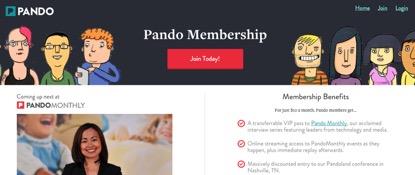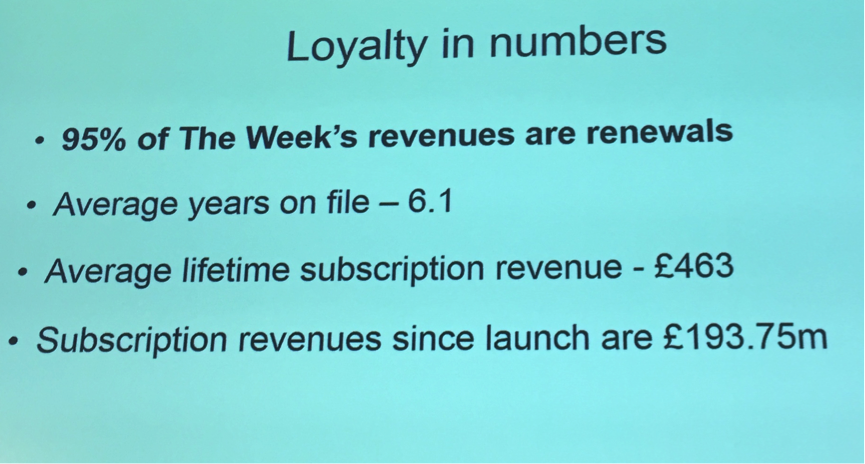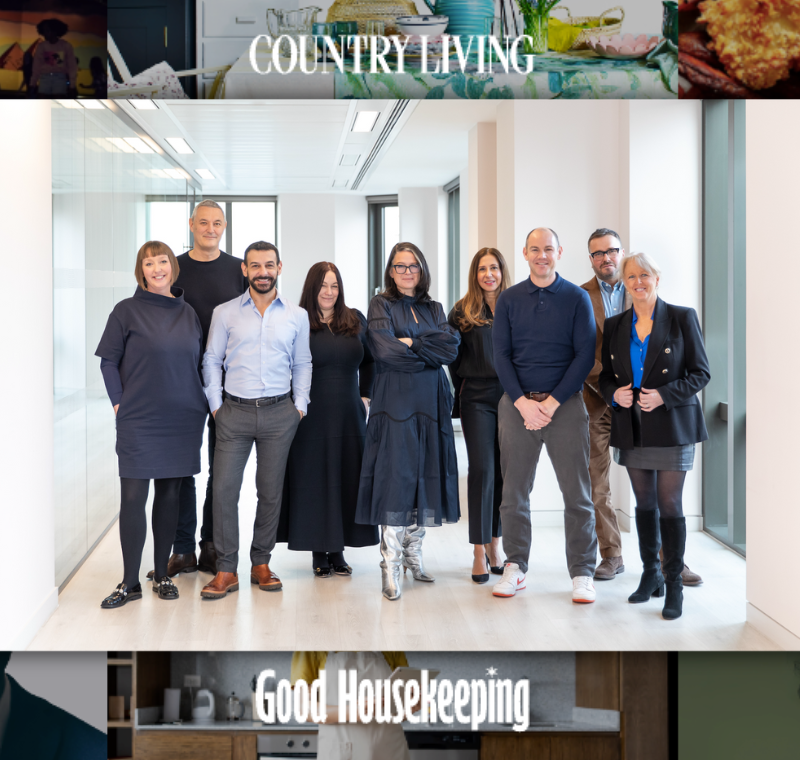The value of developing deep audience relationships
Alan Hunter, head of digital at News UK’s The Times and The Sunday Times (The Times), and Kerin O’Connor, chief executive of The Week spoke at the PPA Festival in a session entitled, “How to build a membership model.”
Background: Several companies have started experimentation with membership models, among them brands such as The Times and Guardian in the UK and the National Journal and Pando (screenshot below) in the US. Hunter also mentioned that the Wall Street Journal and several radio stations are working towards this model.

The Week: the value of subscribers
Back at the PPA Festival, O’Connor showed three slide (photos below) in particular that spoke to the power of audience loyalty.
The first slide tracked income from an initial group of 2,750 subscribers to The Week’s first trial subscription 20 years ago:

While The Week already has high subscription renewal rates, O’Connor showed how loyalty even impacts here:

And last but not least, he showed the lifetime, lifetime value and total revenues The Week has derived from subscriptions since its launch.

See The Week’s subscription offer here.
The Times and The Sunday Times: beyond subscriptions
Hunter outlined two basic options available to media owners: (one) either you go for volume and scale and monetise through advertising or (two) you go for a premium service people pay for. “We (The Times and Sunday Times) chose the latter because we believe great journalism needs to be paid for.”
Furthermore, a decision was taken to move beyond subscriptions to offer “memberships,” in order to develop more and deeper relationships with its core audience.
In March this year, The Times announced that it had broken through 400,000 paid-for members, with 172,000 of them digital only subscribers. At the PPA Festival, Hunter repeated this number, adding that most of the members pay around £6 per week for their membership (The Times have a variety of subscriber/membership options available – see more here).
Hunter showedThe Times’ membership offer building blocks. Key to the model is that it offers members more than access to the newspaper or news website, but creates value beyond what would be a normal subscription. An example of what is on offer to members is:
- Access to the tablet and smartphone apps
- Full access to The Times and The Sunday Times websites
- Access to The Times archives from 1785 to 1985
- A regular email bulletin on topics of interest
- Access to cross words and other mind games
- Access to Times+ (events, offers and other extras)
Below are a few other highlights from Hunter’s presentation.
On the tablet edition
According to Hunter, people who use the tablet “are much more likely to stay on as members.” They also spend a lot of time engaging with the tablet editions, with dwell times of up to 45 minutes in the week and more on weekends.
On “The Bulletin” email
“Email is an area that is particularly useful.” As an example, he mentioned a business bulletin that goes out twice a day. However, there is also the Red Box email on politics, which is free to non-members too, but with more in-depth data and analysis on the website, available only to members.
Events
It is important “to make people feel part of a community.” This is where Time+ comes into play. In the past year, The Times ran a couple of hundred events/meetings with people ranging from celebrities, to sports stars, newsmakers and The Times’ own writers and journalists.
On the latter, Hunter said it “is for people to put a face to names and ask questions they would like answered.” One such an example with David Walsh, the long-time sports writer who refused to believe Lance Armstrong’s anti-doping denial. According to Hunter, this session “could have gone on for a lot more than the two hours it was scheduled.”
These events are, however, useful to the writers too for they get to know their audience, while “it shows there’s life beyond the Twitter echo chamber.”
On building membership value
“We are always looking to provide more.” One such example is Byline, a quarterly magazine exclusively for members. It for example features interviews and insights into what makes the news.
Story by Cobus Heyl.
More like this
Why business leaders are trying to turn customers into subscribers









